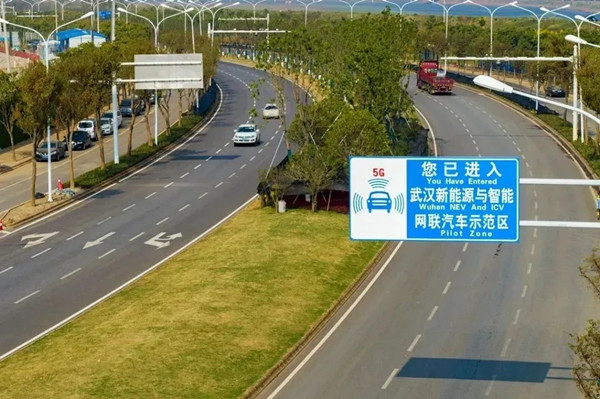

An open test road for autonomous driving vehicles in the WHDZ. [Photo provided to en.whkfq.gov.cn]
The Wuhan Economic & Technological Development Zone (WHDZ) in Wuhan, Central China's Hubei province, continues to make great strides in boosting the development of its automobile industry, according to local media reports.
The zone has been accelerating the construction of new energy and intelligent-connected automobile bases as well as the development of innovative platforms to fully promote the transformation and upgrading of the traditional automobile industry.
With the introduction of key industrial projects covering new technologies, new industries, and new business formats such as major industrial projects from Xpeng Motors, China Lithium Battery Technology Co, SPIC Hydrogen Energy Co, and Lotus Technology Global Headquarters, the development zone is accelerating the attraction of projects, talents and resources.
According to the project agreement, the development will include the construction of a vehicle and powertrain plant. The planned production capacity of the vehicle project is 100,000 vehicles annually.
Headquartered in Guangzhou in South China's Guangdong province, Xpeng Motors is one of China's leading smart electric vehicle companies.
It has R&D centers in Beijing, Shanghai, Shenzhen, Silicon Valley and San Diego.
In order to optimize its users' travel experience, Xpeng Motors independently researches and develops full-stack autonomous driving technology and intelligent voice-driven on-board operating systems, as well as core vehicle systems including power systems and electrical and electronic architecture.
A 106-kilometer road test for intelligent road network vehicle demonstrations and applications has been completed in the zone, and offers full 5G coverage. Combined with the Beidou Navigation Satellite System, the demonstration zone has become one of the most advanced V2X vehicle-road collaborative test areas in China.
Demonstration applications will be carried out in eight areas including autonomous public transportation, logistics distribution, shared travel, smart parking, and sanitation.